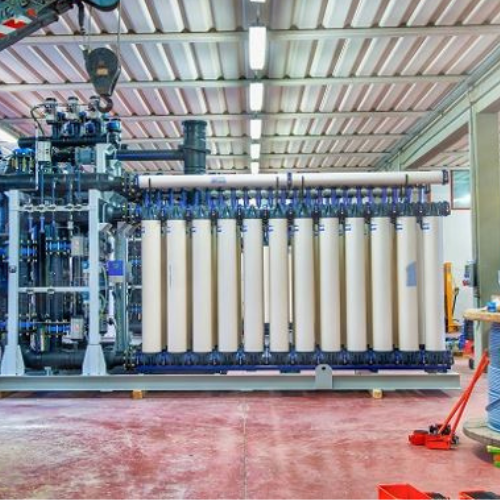Enterprises looking to secure their networks rely heavily on Fortinet FortiGate firewalls. Understanding FortiGate firewall pricing for enterprises is vital for IT managers and procurement teams. The pricing depends on firewall models, throughput capabilities, licensing, and optional security modules like anti-virus, web filtering, and intrusion prevention.
In India, businesses can obtain Fortinet FortiGate firewall dealer price through authorized distributors and resellers. Dealers often provide cost breakdowns, including hardware, licenses, and maintenance services, ensuring clarity on total expenses. Companies can also evaluate FortiGate firewall cost estimation to plan IT budgets effectively and align network security with financial constraints.
The value of a FortiGate firewall extends beyond price, offering high-speed threat detection, VPN support, and centralized network management. Enterprises can compare different Fortinet enterprise firewall solutions cost to choose the model that best fits their infrastructure needs. Understanding the FortiGate firewall total cost of ownership ensures that businesses invest wisely in long-term network security.
For businesses seeking enterprise-grade security, evaluating Fortinet FortiGate firewall pricing in India is a strategic step. By comparing dealer quotes, analyzing cost components, and selecting the right model, companies can implement reliable security without exceeding budget limits.
https://radiant.in/fortinet-fo....rtigate-firewall-for
دریافت پوسٹسہمارے Discover صفحہ پر دلکش مواد اور متنوع نقطہ نظر کو دریافت کریں۔ تازہ خیالات کو اجاگر کریں اور بامعنی گفتگو میں مشغول ہوں۔
UF Water Treatment Plant by Shri Balaji Aqua – Pure Water, Trusted Technology
Experience advanced water purification with Shri Balaji Aqua, a leading name in UF Water Treatment Plants. Our ultrafiltration systems ensure crystal-clear, bacteria-free water using cutting-edge membrane technology—perfect for industrial, commercial, and domestic use. Choose quality, choose purity.
https://shribalajiaqua.in/serv....ice/uf-system-water-
#shribalajiaqua #ufwatertreatmentplant #waterpurification #cleanwatersolutions #industrialwatertreatment
Top 10 Proven Ways to Boost Your Facebook Page Likes:
Looking to grow your Facebook page the right way? Check out the Top 10 Proven Ways to Boost Your Facebook Page Likes and start seeing real results. From optimizing your profile to posting engaging content and using smart promotion tactics, these methods are simple and effective. At Socio Fire, we help you grow your audience naturally with no bots or shortcuts. Just real strategies that deliver. Ideal for businesses, creators, and anyone aiming to build a strong presence on Facebook.
Learn more: https://milyin.com/864249/
Create Impactful Experiences with a Leading Hybrid Event Production Company
Bring your events to life with the expertise of a professional hybrid event production company that blends live and virtual experiences seamlessly. Whether it’s a conference, product launch, or corporate meeting, hybrid events allow you to connect with audiences worldwide while maintaining real-time engagement. A skilled production team ensures top-quality visuals, flawless streaming, and interactive participation, making your event unforgettable. From planning and technology setup to audience engagement, the right hybrid event production company helps you create impactful moments that leave lasting impressions. Turn your next event into a powerful global experience with expert hybrid event production services.
Visit: https://everone.life/blogs/214....5/5713/unforgettable
Zip Hooded Sweatshirt voor Dagelijks Gebruik
Deze zip hooded sweatshirt is de perfecte combinatie van comfort, functionaliteit en personaliseerbaarheid. Voorzien van een stevige ritssluiting, een zachte binnenkant en een capuchon met gevoerde voering – ideaal om te laten bedrukken of borduren met jouw logo of tekst.
https://borduurservicebelgie.b....e/product/full-zip-h
What Is Api Testing?
API Testing verifies the functionality, performance, and security of application programming interfaces that connect different software systems. It ensures seamless communication, detects defects early, and improves reliability before the user interface is built. With automation and continuous testing, API testing boosts software quality, reduces costs, and enhances overall system performance and user experience.
Enroll now: https://www.webomates.com/blog..../software-testing/to
#apitesting #softwaretesting #automationtesting #qualityassurance #devops #webomates #testingtools #continuoustesting #apiautomation #softwarequality #testingstrategy
Find a Recycling Vending Machine Near Me by Tom Robots
Locate nearby TOM Robots Recycling Vending Machine Near Me that make sustainability convenient. Exchange recyclable bottles and cans for rewards while supporting cleaner communities. It is smart, automated, and user-friendly—perfect for businesses, municipalities, and eco-conscious users.
Visit Now: https://www.tomrobots.com/coll....ections/reverse-vend

ProstaVive: Safe & Effective Prostate Health Supplement
Website:-https://yourhealthrights.com/prostavive/
#prostavive #prostatehealth #menswellness
Expert Sales Training in Ahmedabad for Businesses
Enhance your sales team’s performance with Sales Training in Ahmedabad by Dishah Consultants. Our training focuses on lead generation, negotiation, client relationship management, and closing techniques. Tailored to your business needs, our programs help teams improve conversion rates, boost revenue, and achieve strategic objectives.
https://www.dishahconsultants.....com/sales-training-i

Top Benefits of Using a Solar Battery Charger for Everyday Life
We count on power for almost everything these days. Power keeps our lives going by letting us do things like charging our phones and lighting up our homes. How about when we're not at home, moving, or when the power goes out? That's when a solar battery charger comes in handy. It turns the sun's power into electricity that you can use anywhere and at any time. It doesn't need to be plugged into the wall.
Visit more: https://powergenerationsolutio....ns.blogspot.com/2025



